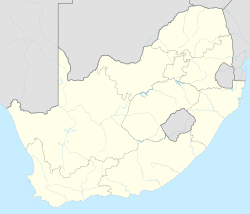Zonnebloem
| Zonnebloem | |
|---|---|
 Street map of Zonnebloem |
|
|
|
|
| Coordinates: 33°55′52″S 18°25′59″E / 33.931°S 18.433°ECoordinates: 33°55′52″S 18°25′59″E / 33.931°S 18.433°E | |
| Country | South Africa |
| Province | Western Cape |
| Municipality | City of Cape Town |
| Main Place | Cape Town |
| Area | |
| • Total | 1.42 km2 (0.55 sq mi) |
| Population (2011) | |
| • Total | 5,122 |
| • Density | 3,600/km2 (9,300/sq mi) |
| Racial makeup (2011) | |
| • Black African | 39.4% |
| • Coloured | 31.4% |
| • Indian/Asian | 2.2% |
| • White | 19.6% |
| • Other | 7.4% |
| First languages (2011) | |
| • English | 47.1% |
| • Afrikaans | 26.6% |
| • Xhosa | 8.5% |
| • Zulu | 1.6% |
| • Other | 16.2% |
| Postal code (street) | 7925 |
Zonnebloem (Dutch for sunflower) is a suburb in City of Cape Town metropolitan municipality in the Western Cape province of South Africa, previously part of District Six.
It was a farming estate until the early 19th century, when it became a suburb of Cape Town as the population and city boundaries grew. Zonnebloem became a home to freed slaves, merchants, labourers and immigrants. During apartheid, the area of District Six was declared a white-only area and the previous residents were evicted.
The suburb hosts the Cape Town Campus of the Cape Peninsula University of Technology.
...
Wikipedia




